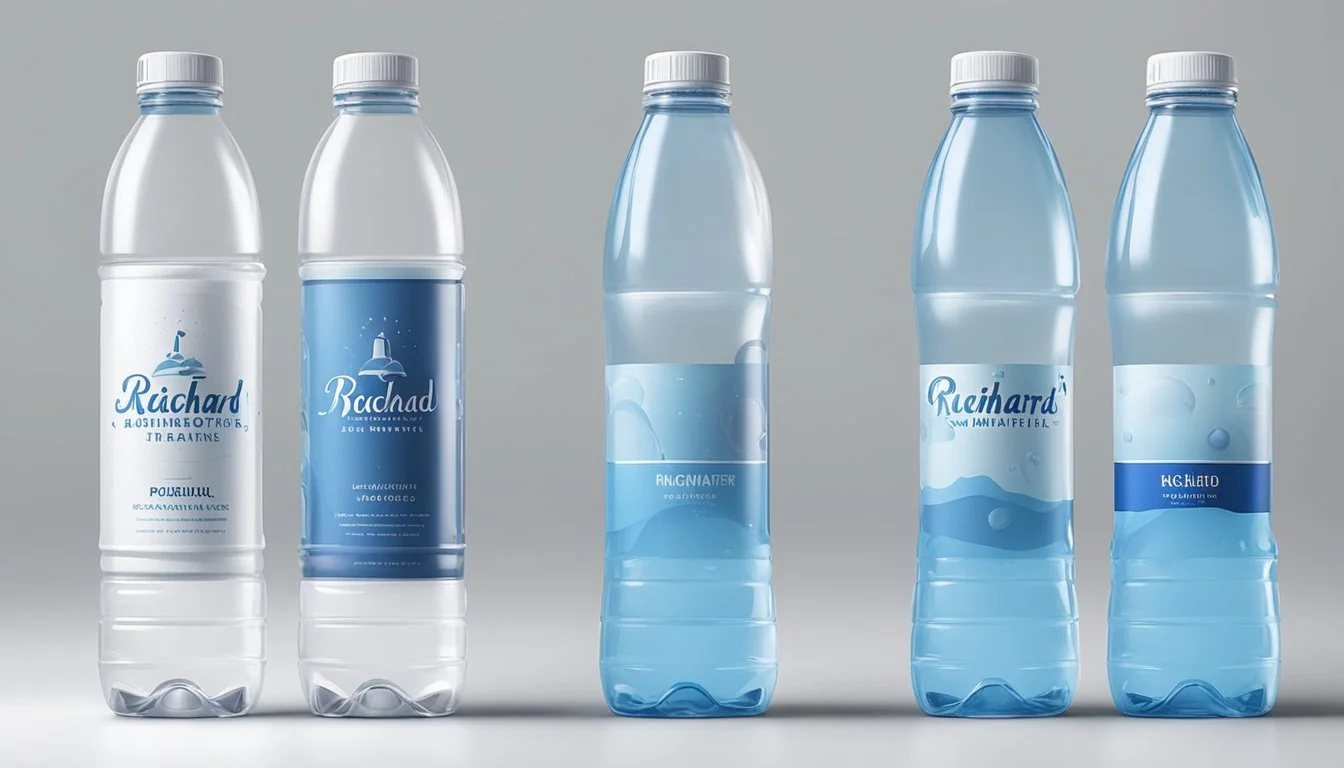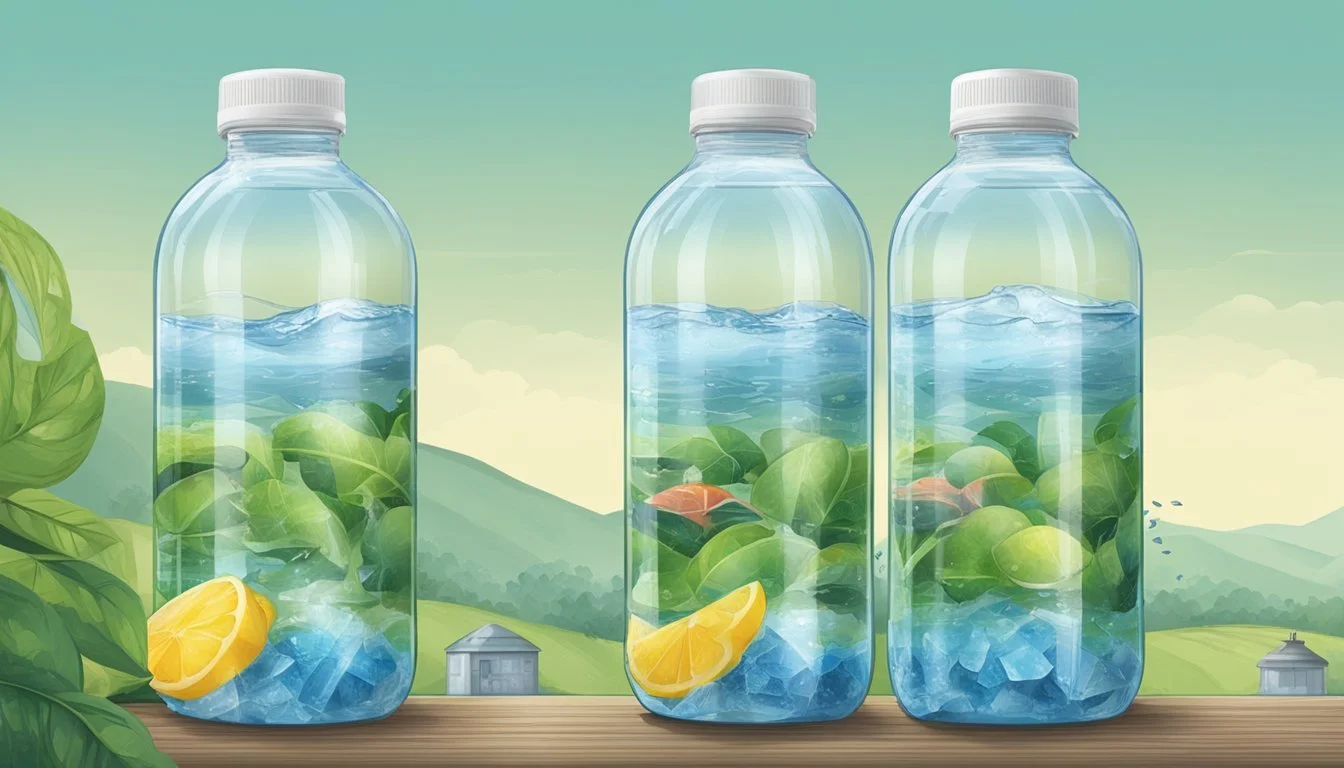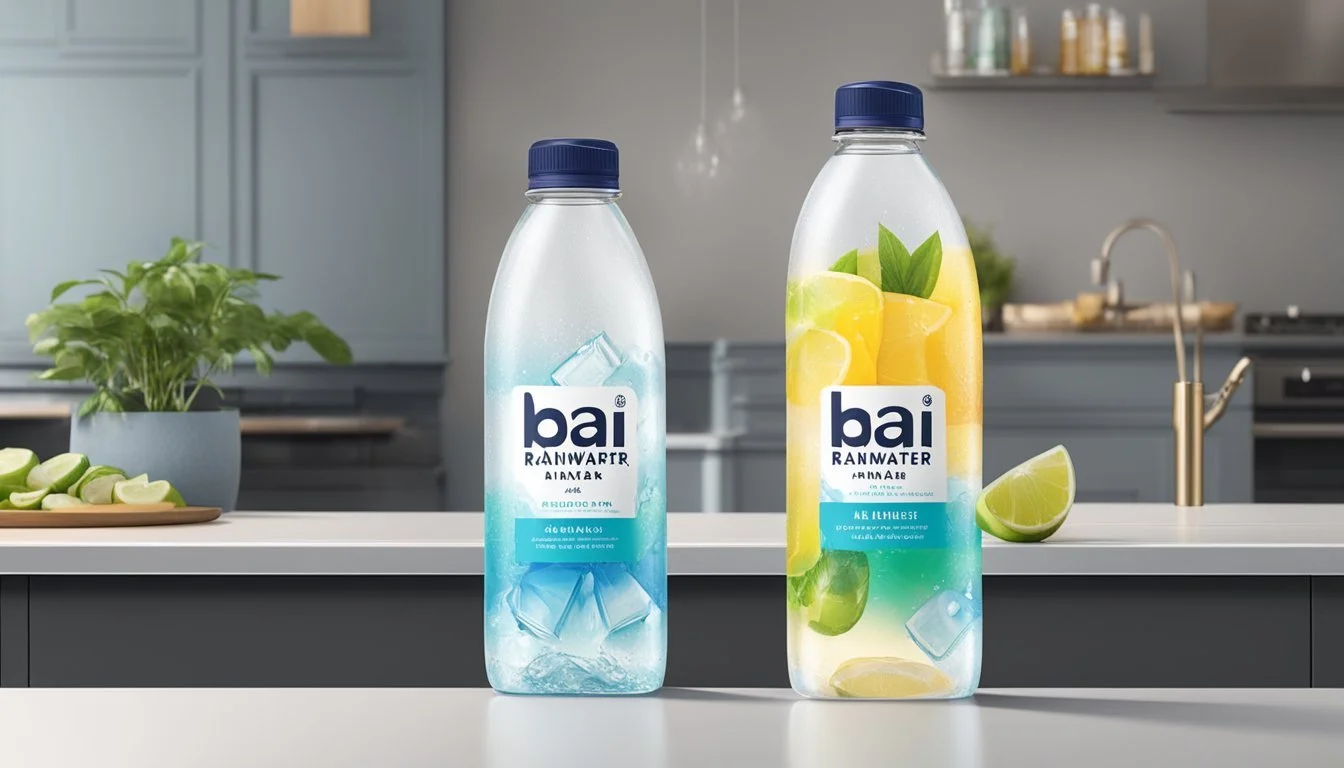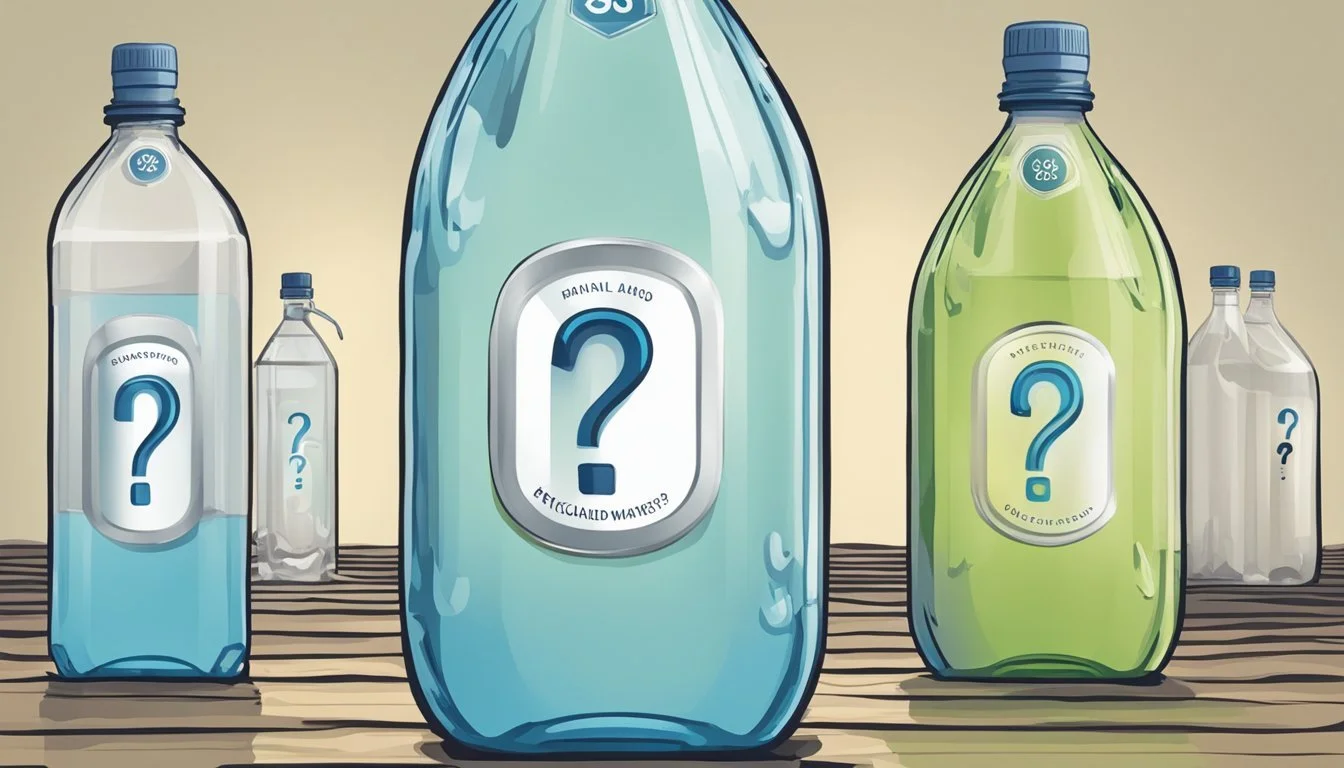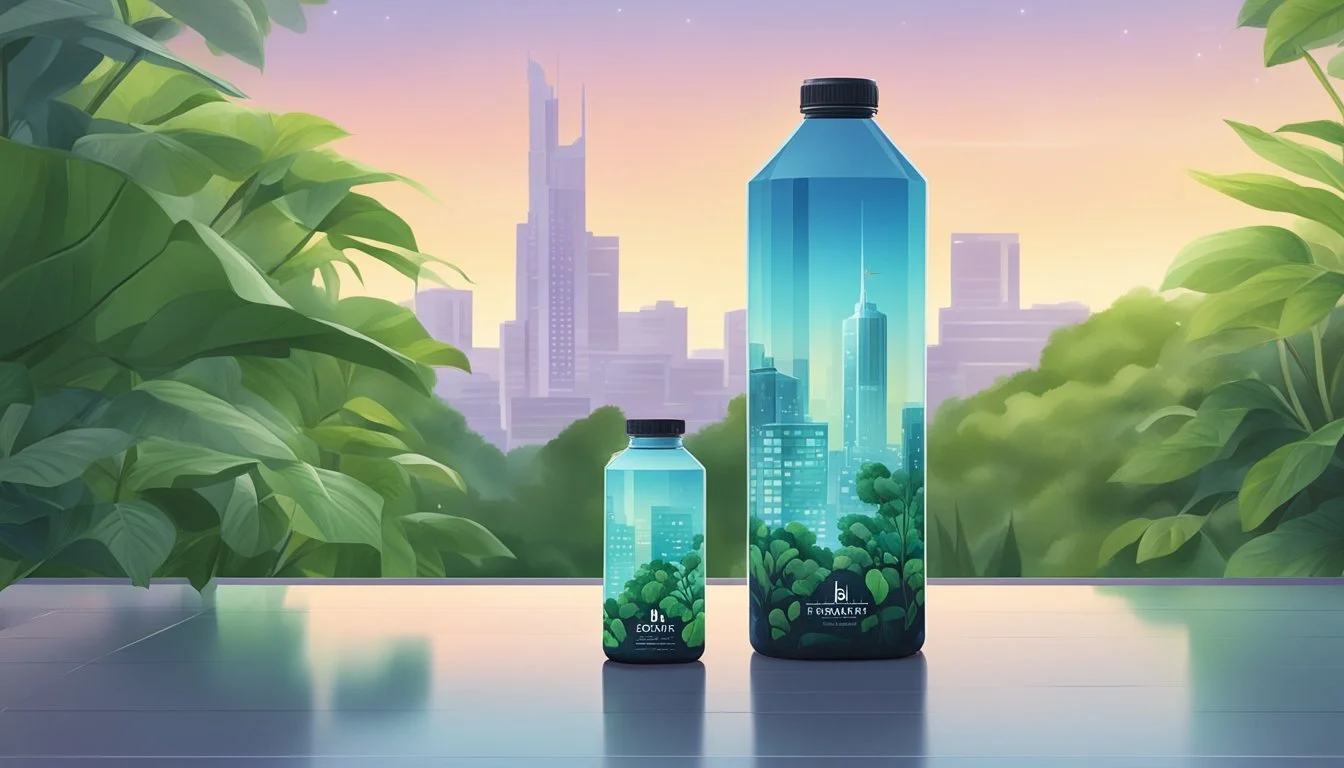Bai vs. Richard’s Rainwater
Analyzing the Superior Bottled Water
When choosing between Bai and Richard's Rainwater, discerning consumers have distinct preferences and requirements. Bai offers a low-calorie, antioxidant-rich option, with only one gram of sugar per bottle and excludes artificial sweeteners and added sugars. This makes it an appealing choice for those seeking hydration without compromising on health.
On the other hand, Richard's Rainwater provides an entirely different appeal by capturing and bottling rainwater in its purest form before it touches the ground, ensuring a unique and fresh taste. For those concerned about sustainability and natural purity, Richard's Rainwater might be the ideal pick.
Both Bai and Richard's Rainwater present unique benefits that cater to different consumer priorities. Whether you prioritize health-conscious ingredients or environmental sustainability, understanding the characteristics of these bottled waters can help you make an informed choice.
Understanding Bai and Richard’s Rainwater
Both Bai Beverage Company and Richard’s Rainwater provide unique perspectives on bottled water, each emphasizing purity and sustainability in their processes.
Bai Beverage Company Overview
Bai sources its water from carefully selected mountain springs. The company prides itself on the natural minerals present in the water, which enhance its flavor and make it more palatable. This spring water is known for its clean, crisp taste, providing a refreshing experience for consumers.
Bai’s commitment to quality and taste is evident in its sourcing practices. The company aims to balance taste with health benefits by utilizing these naturally occurring minerals. Bai has positioned itself as a premium brand in the bottled water market by focusing on this unique sourcing and taste profile.
Richard’s Rainwater Company History
Richard Heinichen founded Richard’s Rainwater in the 1990s after experiencing issues with well water at his home in Austin, Texas. Frustrated with the negative effects on his hair and laundry, he began collecting rainwater for personal use. This initiative evolved into a business that sells both still and sparkling rainwater.
The company captures rainwater before it hits the ground, ensuring its purity. This method helps prevent urban runoff and reduces the strain on traditional water sources. Richard’s Rainwater is packaged in recyclable aluminum cans and glass bottles, emphasizing sustainability. In 2022, the company collected roughly 4 million gallons of rainwater from two U.S. locations, highlighting its scale and impact.
Sourcing and Collection
The sourcing practices of Bai Waters and Richard's Rainwater reflect their unique approaches to providing quality bottled water. This section explores how each brand sources its water and the specific collection methods they employ.
Sourcing of Bai Waters
Bai Waters sources its water from various natural springs and wells located in numerous locations around the world. These sites are selected for their pristine conditions and favorable mineral content.
Bai places a strong emphasis on using waters with naturally occurring antioxidants and electrolytes. The brand's marketing often highlights these health benefits, aiming to appeal to health-conscious consumers. Bai takes care to ensure that the water extracted maintains its purity through rigorous testing and quality controls.
The spring water collection points are chosen based on factors like geographic location, water purity, and sustainability practices. Bai ensures that these springs and wells are environmentally sustainable and regularly monitored to maintain high-quality standards.
Richard’s Rainwater Collection Sites
Richard’s Rainwater takes a novel approach by harvesting rainwater as its sole source. Their collection sites are strategically located in some of the rainiest cities, optimizing the volume of water harvested. Rainwater is collected before it hits the ground, ensuring that it remains in its purest form.
The company employs a proprietary, nearly zero-waste filtration system to make contaminated rainwater potable. This filtration process is chlorine-free and removes particulate and biological contaminants on-site.
By using rainwater, the company effectively reduces its reliance on traditional water sources, contributing to water conservation efforts. With a substantial collection area, Richard’s Rainwater's process is both innovative and environmentally conscious, capturing millions of gallons annually from clouds directly. This method aligns with their goal of providing a sustainable alternative in the bottled water market.
Environmental Impact and Sustainability
Both Bai and Richard's Rainwater emphasize sustainability, yet their approaches to environmental responsibility differ significantly.
Bai's Sustainability Initiatives
Bai focuses on reducing its carbon footprint and utilizes plant-based bottles for many of its products. This effort helps reduce reliance on non-renewable resources. Additionally, Bai works on offsetting emissions through various programs, ensuring a net-positive impact on the environment.
Bai bottles also feature a design that uses less plastic, contributing to waste reduction. Their commitment extends to sourcing ingredients responsibly, aiming to minimize the impact on ecosystems. Bai's sustainability efforts are recognized through certifications and partnerships with environmental organizations.
Richard’s Environmental Commitment
Richard's Rainwater leads in utilizing renewable water sources. By harvesting rainwater, the company minimizes the strain on traditional water supplies and promotes a sustainable resource model. This approach ensures a continuous, renewable supply of clean water while protecting local ecosystems.
Richard's Rainwater's environmental pledge also involves partnering with organizations like EcoRise. These collaborations aim to educate communities and inspire sustainable practices. The brand's facilities are designed to maximize energy efficiency and reduce waste, supporting their goal of a net-positive environmental impact.
Production and Filtration Processes
Both Bai and Richard’s Rainwater utilize distinct techniques in their water production and filtration processes, aiming to ensure clean and potable water for consumers. Each method has unique features and benefits.
Bai’s Filtration and Purification
Bai employs an intricate filtration and purification process for their water products. They rely on advanced multi-stage systems that include reverse osmosis and activated carbon filtration to remove impurities. An important aspect involves eliminating chemicals such as chlorine and ammonia, which enhances taste and safety.
Reverse osmosis filters out contaminants as tiny as 0.0001 microns. Activated carbon filters handle larger particulates and improve taste.
After filtration, Bai often adds minerals back to the water for taste. The entire process ensures that the water is not only safe and free from harmful substances but also appealing in terms of flavor and mineral balance.
Purifying Processes at Richard’s Rainwater
Richard's Rainwater focuses on collecting and purifying rainwater. The collected rainwater undergoes rigorous filtration using a proprietary system designed to maintain near-zero waste. This method not only filters out pollutants but also makes the water potable.
Their purification begins with a pre-filtration stage to remove large debris. The water then passes through multi-stage filters, including a fine-particle filter and a UV disinfection unit. This ensures the removal of any remaining microorganisms without relying on chemicals like chlorine.
By utilizing such a purification system, Richard’s Rainwater ensures that their water remains pure and eco-friendly. Their process significantly reduces reliance on conventional water sources, aligning with their sustainability goals and offering a clean drinking option.
Packaging and Materials
Examining the packaging and materials used by Bai and Richard’s Rainwater reveals significant differences in their approaches to environmental sustainability and consumer convenience. Each brand employs unique solutions to meet their goals.
Bai's Packaging Innovations
Bai primarily utilizes plastic bottles for its beverages.
These bottles are designed to be lightweight, making them easier for consumers to carry and reducing shipping costs. While plastic offers convenience, it poses environmental challenges.
Bai has introduced bottles made with post-consumer recycled plastic, aiming to reduce new plastic production.
Each bottle features an easy-to-recycle cap and a shrink sleeve label made from recyclable materials. Despite these efforts, environmental concerns about plastic persist, driving some consumers to seek alternative packaging options.
Richard's Packaging Solutions
Richard’s Rainwater differentiates itself through its innovative use of aluminum cans and plans for dispenser systems to eliminate the need for bottles entirely.
Aluminum cans are 100% recyclable and can be recycled indefinitely without losing quality, making them a more sustainable choice than plastic.
Recently, the company undertook a brand refresh, introducing bold new packaging to appeal to eco-conscious consumers.
The cans are designed to be both functional and visually appealing, emphasizing their commitment to reducing environmental impact while maintaining high standards for purity and taste.
The Role of Recyclable Materials
Both Bai and Richard's Rainwater highlight the importance of using recyclable materials in their packaging.
Bai uses recycled plastic, which helps minimize the production of new plastic and supports circular economy initiatives.
Richard’s Rainwater leverages aluminum cans and aims to deploy dispenser systems, showcasing a commitment to significantly lessen environmental impact.
Both companies understand that the use of recyclable aluminum and other sustainable materials can attract eco-friendly consumers and foster long-term brand loyalty.
In summary, the shift towards using recyclable and sustainable materials by both brands reflects a broader trend in the beverage industry to prioritize environmental responsibility.
Health and Safety Standards
Both Bai and Richard's Rainwater adhere to stringent health and safety standards to ensure their bottled water is safe and high-quality for consumers.
Bai's Compliance with Bottled Water Standards
Bai's bottled water meets the federal standards set by the U.S. Food and Drug Administration (FDA) for bottled water safety and quality. These regulations are comparable to the standards set by the Environmental Protection Agency (EPA) for tap water.
The FDA mandates that Bai's bottled water must be free from harmful contaminants such as lead, arsenic, and PFAS. Regular testing is carried out to confirm that these contaminants are within safe limits. Additionally, Bai employs rigorous quality control measures to maintain water purity, ensuring it is safe to drink.
Quality Control at Richard’s Rainwater
Richard's Rainwater takes a unique approach by capturing rain before it touches the ground, avoiding the need for added chemicals like chlorine, fluoride, or ammonia.
This method results in water that is naturally 100 times cleaner than standard bottled water regulatory requirements. Richard’s Rainwater adheres to the highest safety standards and conducts regular testing to ensure the absence of contaminants such as lead, arsenic, and PFAS.
Collecting rainwater directly from the atmosphere helps maintain its purity and ensures compliance with both FDA and EPA standards, making it both a sustainable and safe choice.
Distribution and Accessibility
Accessibility and distribution play significant roles in the success of bottled water brands. Bai and Richard's Rainwater employ different strategies to ensure their products reach the consumer effectively.
Bai’s Global Reach
Bai is available in a wide array of locations, making it accessible to consumers worldwide. The brand has secured shelf space in major retailers like Kroger, Whole Foods Market, Sprouts, and Albertsons. Additionally, Bai utilizes the expansive network of e-commerce platforms, prominently featuring on Amazon to reach customers beyond physical store locations.
Distribution channels extend beyond the United States, reaching international markets through strategic partnerships. This global presence ensures that Bai remains a familiar name in the bottled beverage industry, supported by a robust logistics network that maintains product availability across various regions.
Richard’s Community Engagement
Richard’s Rainwater focuses on aligning its distribution strategy with community-oriented initiatives. With a niche focus, the company ensures its products are readily available in select high-traffic retail environments like Whole Foods, Central Market, and HEB. This selective retail presence underscores its commitment to quality and community trust.
Richard’s also engages in partnerships with local communities, donating purified rainwater to areas in need. This community-focused approach not only enhances brand reputation but also ensures accessibility for consumers who prioritize sustainable and local sources. By combining retail presence with community initiatives, Richard’s Rainwater effectively distributes its unique product while fostering local relationships.
Consumer Experience
Bai and Richard’s Rainwater offer distinct experiences for consumers, focusing on flavor and unique characteristics. This section highlights the standout aspects of each brand's offerings.
Flavor Profiles of Bai
Bai provides a variety of flavored water options. Each beverage is infused with antioxidants and is low in calories, catering to health-conscious individuals. Popular flavors include Brasilia Blueberry, Panama Peach, and Costa Rica Clementine.
Consumers often appreciate the subtle sweetness and refreshing taste. The flavor profiles are designed to be natural, avoiding the artificial aftertaste common in some flavored waters. The careful balance of taste and health benefits makes Bai a favorite for those seeking more than just hydration.
Tasting Notes on Richard’s Sparkling Rainwater
Richard’s Rainwater offers both still and sparkling options. The sparkling variety stands out for its crisp and clean finish, free from the metallic or plastic taste often associated with bottled options.
This water is collected and purified from rain, providing a unique mineral profile. Consumers describe it as exceptionally refreshing and pure, making it an excellent base for cocktails or a standalone drink. It offers a practical alternative to traditional tap or municipal water solutions, with a promise of sustainability and environmental consideration.
The simplicity and clarity of Richard’s Rainwater appeal to those who value natural and unprocessed beverages.
Marketing and Branding Strategies
The marketing tactics and branding efforts of Bai and Richard's Rainwater significantly influence their market positions. Each uses distinctive approaches to appeal to their target audiences and establish a strong brand identity.
Brand Identity of Bai
Bai focuses on flavor innovation and health benefits. The brand highlights its products as refreshing, low-calorie beverages enhanced with antioxidants. Bai's commitment to health-conscious consumers is evident through its strategic flavor offerings and nutritional marketing.
Bai leverages vibrant packaging to attract attention in a crowded market. Its marketing campaigns often feature endorsements from celebrities and fitness influencers, helping to boost brand visibility. Bai's presence in major retail locations also contributes to its accessibility and consumer reach.
Richard’s Rainwater Marketing Approach
Richard’s Rainwater emphasizes environmental stewardship and purity. The brand promotes its rainwater collection process as sustainable and eco-friendly. It highlights the purity and unique source of its water, appealing to environmentally-conscious consumers.
Marketing efforts for Richard's Rainwater include engaging narratives about their rainfall collection and sustainability. Partnerships with local breweries like Faubourg Brewing Co in New Orleans further enhance its local appeal. The brand also invests in community involvement, including water donations in Louisiana, which reinforces its commitment to both sustainability and social responsibility.
Future Trends and Considerations
Examining upcoming trends and considerations reveals insights into the evolution of the bottled water industry and shifts in consumer preferences that may impact brand choices.
Innovation in Bottled Water
Innovations in bottled water focus on sustainable practices and new purification methods. Richard's Rainwater, for instance, employs a proprietary zero-waste filtration system that bypasses traditional chlorine treatment. This technology not only improves water quality but also reduces environmental impact.
By harvesting rainwater, they utilize renewable resources rather than depleting groundwater or springs. Bai, known for its antioxidant-infused beverages, might explore similar sustainable practices. Efforts to minimize carbon footprints through local sourcing and efficient bottling processes are becoming crucial.
Anticipated Changes in Consumer Preferences
Consumers are increasingly conscious of sustainability. They favor brands with eco-friendly practices and reduced plastics usage. Richard's Rainwater is recognized for its commitment to sustainability and net-positive bottled water.
Consumers also value ingredient transparency and health benefits. Bai's focus on antioxidants and natural flavors aligns with these demands. Both brands need to adapt to preferences for locally sourced products, evident in Richard's production sites in Dripping Springs, Texas, and Kiln, Mississippi. Adapting to these trends will be vital for maintaining consumer loyalty and market relevance.




